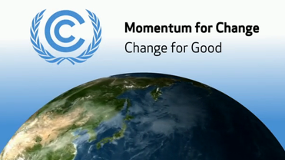Getting the message - Linking Communities and Early Warnings in FSM
- Details
- Category: News
- Published: Monday, 30 November -0001 00:00
- Written by Bill Jaynes
- Hits: 238
Micronesia Red Cross Society (MRCS)
Access to timely and accurate information is one of the most important parts of the early warning process. But what happens if you live in a remote part of the world, with limited access to mobile telephones, television, radio and the internet? What happens if you are not sure where to get information, or who you can trust to provide you with the right information?
This was a challenge facing the Micronesia Red Cross Society (MRCS) and the American Red Cross (AmRC), who have been implementing a community resilience program in the Federated States of Micronesia (FSM) since 2016. The Micronesia Community Resilience and Capacity Development (MCRCD) project has been working to reduce the number of deaths and injuries and lessen the negative socioeconomic impact caused by climate-related disasters (e.g. typhoons) and environmental degradation in vulnerable Micronesian islands. Part of the project has focused on building community resilience through the strengthening of community disaster management mechanisms, including early warning systems (EWS).
“Communications and access to information are fundamental elements of community resilience. And they are also critical parts of the early warning process, which is so important and literally can mean the difference between life and death in emergency situations,” says Hans Skilling, Coordinator of MCRS Kosrae Chapter in FSM. “So when we had the opportunity to work with the American Red Cross on the MCRCD project, which has a strong focus on early warning systems, we really wanted to make sure our community partners were connected and in control of the information that is available in the FSM.”
“We don’t work in every community in the FSM, so it didn’t make sense for us to create an elaborate system that would only be used in a few places - early warning systems need to be consistent across the whole
state or country. But strengthening an early warning system is not always about upgrading technology and sometimes the most effective and simple things to do is to make sure everyone in the community knows where to go or who to talk to for that critical information,” said Hans. “So we have worked closely with the communities, the local disaster management committees and the Disaster Coordination Offices to improve what was already in place and strengthen that link between communities and the existing early warning mechanisms.”
To do this, MRCS, AmRC and community partners have painted a series of colourful murals across 15 communities, illustrating the critical information from each community’s disaster response plan. Information displayed in the murals include the traditional warning signs to look out for, such as wind, tide patterns, animal movements, what the existing government disaster warning service is and how and when to access it (FM and handheld radios radios), where the key meeting and evacuation points are and who to speak to for more information. The murals also identify focal points for women and people with disabilities - a new inclusion to the community disaster plans following a community led review of the plans facilitated by the MCRCD project. Following the installation of the murals, the 15 communities took part in a series of disaster drills to test out the processes and make sure the information flow is working properly.
“Having the murals on display has made it easier for us to remember what needs to happen on our island when there is a disaster,” said Mr. Katoisy Ununno, from Romolum island in Chuuk. “It sticks in my mind because I see the painting every day when I walk home from the dock. And it is so colourful, it makes me happy when I walk past, knowing that this is reminding us all of what we need to do to stay safe.”
Funded by USAID’s Bureau for Humanitarian Assistance (USAID/BHA), the Micronesia Community Resilience and Capacity Development project has been supporting communities in FSM since 2016. Now in its second phase of implementation, the MCRCD project is supporting communities across five key areas: Increasing the resilience of communities; Strengthening the resilience of schools; Replanting coastal vegetation such as mangroves and pandanus; Improving and reinforcing community water and sanitation infrastructure; and Strengthening the capacity of MRCS staff and volunteers to respond to disasters.






